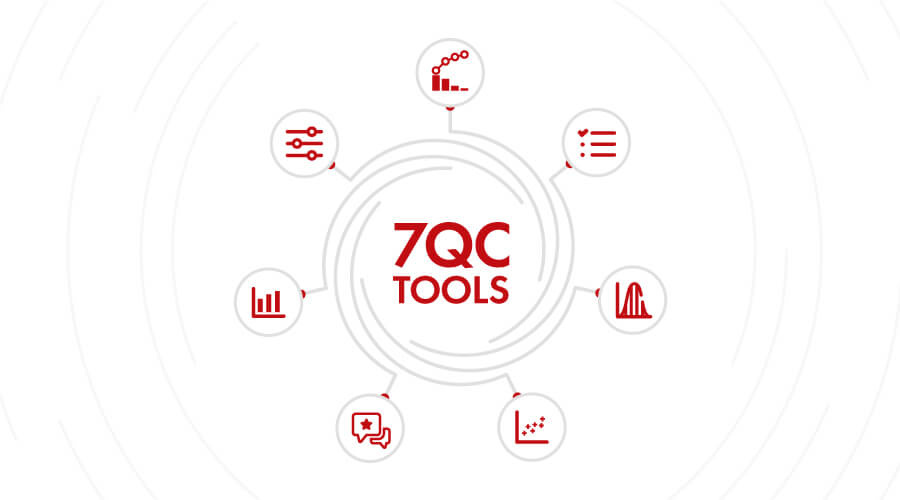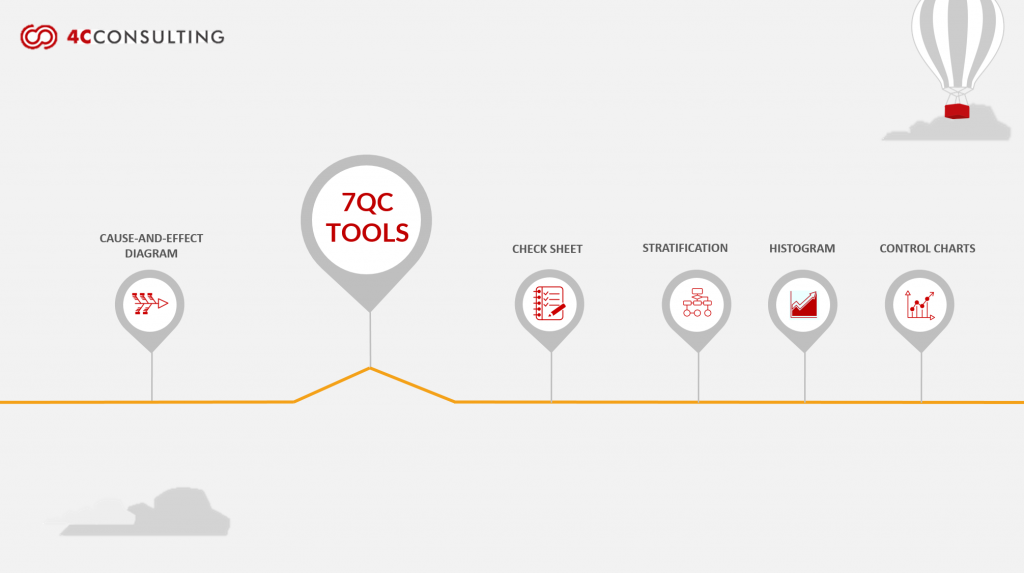
Everything About The 7 QC Tools for Process Improvement
13th Feb, 2020
“As much as 95 per cent of all quality-related problems in the factory can be solved with seven fundamental quantitative tools.”
-Kaoru Ishikawa, The inventor of Fishbone Diagram
In today’s customer-centric market, quality is an integral factor in the growth and sustainability of any business. Businesses go the extra mile to provide the best and excellent customer experience to ensure customer satisfaction. Hence, efficient quality management which has the highest impact on customer experience is one of the most essential features for any business.
Introduced by Kaoru Ishikawa, the seven basic tools of quality also known as 7 QC tools are very effective in quality management and quality assurance process. So, businesses who want to ensure competitive and excellent quality of their products and services can utilize the proven 7QC tools for structuring a strategic plan for quality improvement.
List of 7 QC Tools For Quality Improvement
Cause and Effect Diagram
Cause and Effect Diagram also known as Fishbone Diagram helps in identifying the potential causes of an effect or a problem. In addition to sorting ideas in respective categories, it also helps in understanding the areas of opportunity through effective brainstorming. Fishbone training empowers you to identify the potential cause in the problem.
Control Chart
Control charts are used to study how the processes have changed over a period of time. Further, by comparing current data to historical control limits, one could lead to the conclusion about whether the process variation is consistent as in under control or unpredictable as in out of the control due to being affected by special causes of variation.
Pareto Chart
Pareto Chart is based on the 80/20 rule where it shows the significant factors that have the highest impact on the identified problem.
Check Sheet
Check sheet is a structured process which helps to collect and analyzing data. It is an effective tool that can be for a variety of purposes.
Histogram
Histogram is commonly used a graph that shows the data and its frequency of distribution to help users identify each different value in a set of data occurs.
Scatter Diagram
Scatter diagram shows the relationship between two important factors i.e. pairs of numerical data, one variable on each axis to demonstrate the relationship.
Stratification
Stratification also known as a flow chart or run chart is a technique that separates the data gathered from a variety of sources so that patterns can be seen i.e., the path an entity has taken through a defined process.
Utilizing the 7 QC tools in six sigma or quality management process helps in taking a systematic approach to identify and understand the risk, assess the risk, control fluctuation of product quality and accordingly provide solutions to avoid future defects.

When should you use 7 QC Tools?
7 QC tools can be carried out during the quality management, quality improvement process, six sigma implementation processes or even the regular PDCA cycle for the quality purpose for enhanced quality management.
In the first phase of measuring and identifying, Fishbone Diagram also known as cause and effect diagram, Pareto Chart and Control Chart can be utilized. In the next phases of assessment and analysis, Scatter Diagram, Histogram and Checklist can be carried out. The Control Chart can be utilized consistent quality improvement.
Benefits of 7QC Tools
The 7 QC tools are structured and fundamental instruments that help businesses improve their management and production process for achieving enhanced product quality.
From assessing and examining the production process, identification of key challenges and problems to controlling the fluctuation present in the product quality and providing solutions for prevention of defects in future, the easy to understand and implement, 7 QC tools are very effective. Some of the major business benefits of 7 QC tools are listed below.
- Provides a more structured path for problem-solving and quality improvement
- Easy to understand as well as implement yet extremely effective
- A scientific and logical approach for problem-solving
- Follows the 80/20 rule i.e. gain 80% result with 20% efforts
- Improve the quality of product and services
- Helps in identifying and analyzing problems during the process
- Fishbone training aides in root cause analysis and problem-solving
- Encourages team spirit and fosters a healthy culture
- Identifies roots cause and solve it permanently
- Enhance customer experience and customer satisfaction
Based on the data-driven process and customer-centric approach, 7 QC tools implementation is one of the most effective processes that too in the shortest amount of time.
Frequently Asked Questions (faq): 7 Quality Control Tools
What are the 7 QC Tools?
Answer : The 7 Quality Control Tools are most basic and easy to understand but most widely used for improvements, following are the 7qc tools;
- Cause and Effect Diagram
- Check Sheet
- Control Charts
- Histogram
- Pareto Chart
- Scatter Diagram
- Stratification
Why is it essential to understand the 7 QC tools?
You’ll be able to choose the best tool to assist you in resolving your issue or finding the answer to your query more quickly the more familiar you are with these common quality control tools. To find the root causes of your issue, use the Fishbone diagram. To differentiate between common and specific cause variation, a control chart is employed. To find a correlation or link between an X and Y variable, a scatter diagram is employed.
What is meant by Stratification?
A. Stratification also known as a flow chart or run chart. It is a technique that separates the data gathered from a variety of sources so that patterns can be seen i.e., the path an entity has taken through a defined process.
Who created the 7QC Tools?
Kaoru Ishikawa formalized the Seven Basic Tools of Quality Control after being inspired by Deming’s lectures. He thought that by utilizing these seven tools, 90–95 percent of a company’s issues could be resolved.
What are the benefits of 7QC Tools?
Following are the benefits by using 7QC Tools;
- Improved quality of the product
- Helps in identifying and analyzing problems in the process
- Fishbone training aides in Kaizen (Continuous Improvement)
- Encourages teamwork
- Efficient way of solving potential problems
- Fishbone training aiming at determining root causes of problems
- Suggests area of improvement
- Enhances customer satisfaction
What are the different Quality Management Techniques?
Monitoring all processes and procedures required to maintain or reach a given standard of excellence in your firm is known as Quality Management. Following are some of the popular Quality Management Techniques;
- Quality Management Standards
- Design of Experiments (DOE)
- 7QC Tools
- Six Sigma
- Quality Circles
- Total Quality Management (TQM)
- Lean Manufacturing
How 4C can help your organization understanding 7QC Tools?
4C team of certified professionals has provided 80+ implementation of 7 QC Tools and 120+ 7 QC Tools Training. By solving 200+ quality problems, 4C has empowered clients to reduce the 80% cost of poor quality. To accelerate your quality management process and reduce your cost of poor quality, contact our experts now.
